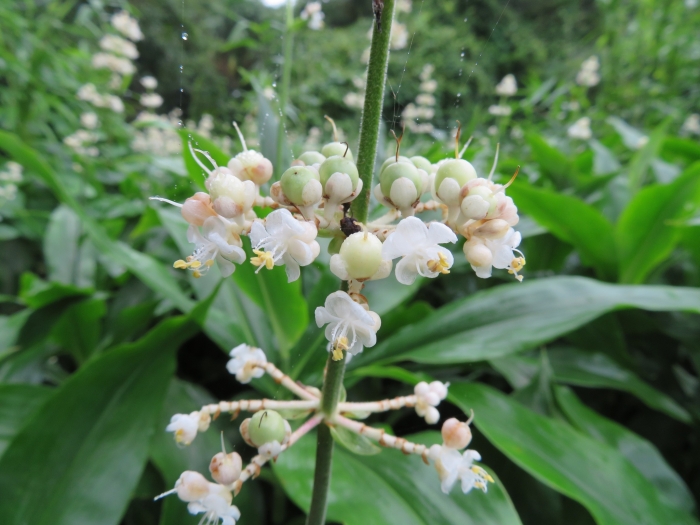East Asian Pollia
(Pollia japonica)
East Asian Pollia (Pollia japonica)
/
/

belvedere04
CC BY 4.0
Image By:
belvedere04
Recorded By:
Copyright:
CC BY 4.0
Copyright Notice:
Photo by: belvedere04 | License Type: CC BY 4.0 | License URL: http://creativecommons.org/licenses/by/4.0/ | Rights Holder: belvedere04 | Publisher: iNaturalist | Date Created: 2020-07-15T14:24:13-07:00 |

























Estimated Native Range
Summary
Pollia japonica, commonly known as East Asian Pollia, is a perennial herb that is native to the understory of temperate forests and forest margins in East Asia, including several provinces in China, Taiwan, Japan, and Korea. It is typically found at elevations up to 3,900 feet. This species is appreciated for its attractive foliage and small, inconspicuous flowers that may not be the main attraction but add to the plant’s overall ornamental value. Pollia japonica grows to a modest size, with a typical height and width that varies but generally remains within a manageable range for garden cultivation.
East Asian Pollia is valued for its ease of maintenance and its ability to thrive under forest canopy conditions, making it suitable for shaded garden areas and woodland gardens. It prefers moist, well-drained soils rich in organic matter and benefits from consistent moisture without waterlogging. In cultivation, it is often used as ground cover or in border plantings due to its lush greenery. While it is not known for any significant problems with diseases or pests, gardeners should be aware of its preferred growing conditions to ensure its health and vigor. It is not typically associated with aggressive roots or invasiveness, making it a safe choice for most garden settings.CC BY-SA 4.0
East Asian Pollia is valued for its ease of maintenance and its ability to thrive under forest canopy conditions, making it suitable for shaded garden areas and woodland gardens. It prefers moist, well-drained soils rich in organic matter and benefits from consistent moisture without waterlogging. In cultivation, it is often used as ground cover or in border plantings due to its lush greenery. While it is not known for any significant problems with diseases or pests, gardeners should be aware of its preferred growing conditions to ensure its health and vigor. It is not typically associated with aggressive roots or invasiveness, making it a safe choice for most garden settings.CC BY-SA 4.0
Plant Description
- Plant Type: Herb
- Height: 1-1.5 feet
- Width: 1-1.5 feet
- Growth Rate: Moderate
- Flower Color: N/A
- Flowering Season: Summer
- Leaf Retention: Deciduous
Growth Requirements
- Sun: Part Shade, Full Shade
- Water: Medium
- Drainage: Medium
Common Uses
Border Plant, Low Maintenance, Potted Plant
Natural Habitat
Understory of temperate forests and forest margins in East Asia
Other Names
Common Names: Asian Pollia, Japanese Pollia
Scientific Names: , Pollia japonica,
GBIF Accepted Name: